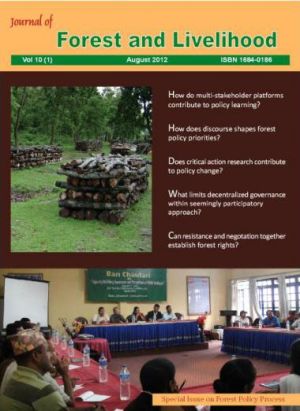Improving Forest Governance through Critical Action Research (CAR): Lessons from ForestAction Nepal’s Experience
DOI:
https://doi.org/10.3126/jfl.v10i1.8604Keywords:
critical action research, counter knowledge, intellectual activism, governance, knowledge hegemonyAbstract
The article makes the case that civil society activism should not be confined to pure advocacy of particular interests in a social segment; there is equally a role for critical action researchers to unravel a broad spectrum of exercise of power and to challenge the unquestioned acceptance of the order by the marginalized communities. The Critical Action Research (CAR) approach developed and used at ForestAction Nepal emphasizes empowering right holder citizens and their alliances through sharing knowledge that counters the dominant knowledge system, collating and communicating critical evidence for transforming policy dialogues, and learning from practice. The CAR attempts of ForestAction have generated valuable evidence of the prospects of civic organizations to act as producers of counter-knowledge rather than reproducers and disseminators of hegemonic knowledge systems that sustain exclusion, domination, and inequities. However, there are formidable challenges in trying to organize critical and engaged action research – from building up of a competent team to confronting institutional powers and raising funds to sustain the activity. It is clearly established that civil society actors have to think and act differently to understand what changes they want to bring about and how to do so.
DOI: http://dx.doi.org/10.3126/jfl.v10i1.8604
Journal of Forestry and Livelihood Vol.10(1) 2012 101-125
Downloads
Downloads
Published
How to Cite
Issue
Section
License
CC-BY-NC: This license allows reusers to distribute, remix, adapt, and build upon the material in any medium or format for noncommercial purposes only, and only so long as attribution is given to the creator.





